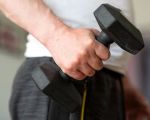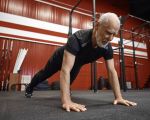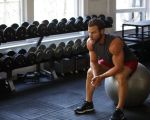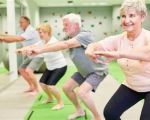- 1-Understanding-Fat-Loss-and-Workout-Basics
- 2-Key-Components-of-a-Fat-Loss-Gym-Workout-Plan
- 3-Sample-Weekly-Workout-Structure
- 4-Nutrition-and-Recovery-for-Optimal-Fat-Loss
- 5-Real-Life-Success-Stories-and-Motivation
- 6-Resources-for-Customizing-Your-Fat-Loss-Plan
1. Understanding Fat Loss and Workout Basics
Fat loss occurs when your body burns more calories than it consumes, creating a calorie deficit. A well-structured gym workout plan for fat loss combines strength training to build lean muscle and cardiovascular exercises to increase calorie expenditure.
Muscle mass boosts metabolism, helping burn more calories at rest. Therefore, balancing weightlifting with cardio is essential for effective and sustainable fat loss.
1.1 The Role of Strength Training in Fat Loss
Strength training preserves muscle during calorie deficits, shapes the body, and promotes metabolic health. Compound exercises like squats and deadlifts engage multiple muscles, increasing workout efficiency.
1.2 Importance of Cardiovascular Workouts
Cardio exercises such as running, cycling, or HIIT (High-Intensity Interval Training) elevate heart rate and accelerate fat burning, complementing resistance workouts.
2. Key Components of a Fat Loss Gym Workout Plan
An effective fat loss gym workout plan incorporates several crucial elements for best results:
2.1 Compound Lifts and Full-Body Movements
Exercises like squats, bench presses, deadlifts, and pull-ups stimulate large muscle groups and maximize calorie burn.
2.2 High-Intensity Interval Training (HIIT)
HIIT sessions alternate bursts of intense effort with recovery periods, boosting metabolism and improving cardiovascular fitness in shorter time frames.
2.3 Consistent Progressive Overload
Gradually increasing weights or reps challenges muscles, driving strength gains and continuous fat loss.
2.4 Active Recovery and Mobility Work
Incorporating stretching and light activity helps prevent injury and supports recovery.
3. Sample Weekly Workout Structure
Here’s an example of a balanced fat loss gym workout plan for a week:
3.1 Day 1: Full-Body Strength Training
Focus on compound lifts such as squats, bench press, bent-over rows, and core exercises.
3.2 Day 2: HIIT Cardio
20-30 minutes of interval sprints or cycling, alternating between 30 seconds high intensity and 60 seconds recovery.
3.3 Day 3: Rest or Active Recovery
Light stretching, yoga, or walking to promote recovery.
3.4 Day 4: Upper Body Strength Training
Work on chest, back, shoulders, and arms with exercises like pull-ups, overhead presses, and dumbbell curls.
3.5 Day 5: Steady-State Cardio
45 minutes of moderate-intensity cardio such as jogging or swimming.
3.6 Day 6: Lower Body Strength Training
Focus on deadlifts, lunges, leg presses, and calf raises.
3.7 Day 7: Rest
Complete rest to allow full muscle recovery.
4. Nutrition and Recovery for Optimal Fat Loss
Exercise alone isn’t enough; proper nutrition and recovery are vital. Consuming a balanced diet rich in protein, healthy fats, and complex carbohydrates supports muscle repair and energy levels.
Hydration and adequate sleep are also critical to optimize fat loss and performance in the gym.
4.1 Tracking Caloric Intake and Macros
Monitoring calories ensures you maintain a deficit, while adjusting macronutrients fuels workouts and recovery.
4.2 Importance of Rest Days
Rest days prevent burnout and injuries by allowing muscles to heal and grow stronger.
5. Real-Life Success Stories and Motivation
Take Sarah’s story: after struggling with weight for years, she committed to a structured gym workout plan for fat loss combining strength training and HIIT. Within six months, she lost 25 pounds, gained muscle tone, and improved her energy significantly.
Similarly, Mike transformed his lifestyle by integrating consistent workouts and nutrition tracking, proving that dedication leads to lasting change.
6. Resources for Customizing Your Fat Loss Plan
Everyone’s body and goals are different. For personalized workout routines, nutrition plans, and expert advice, Fitness offers curated resources and professional support tailored to your fat loss journey.
Using trusted platforms like Fitness empowers you to achieve your health goals effectively and sustainably.








